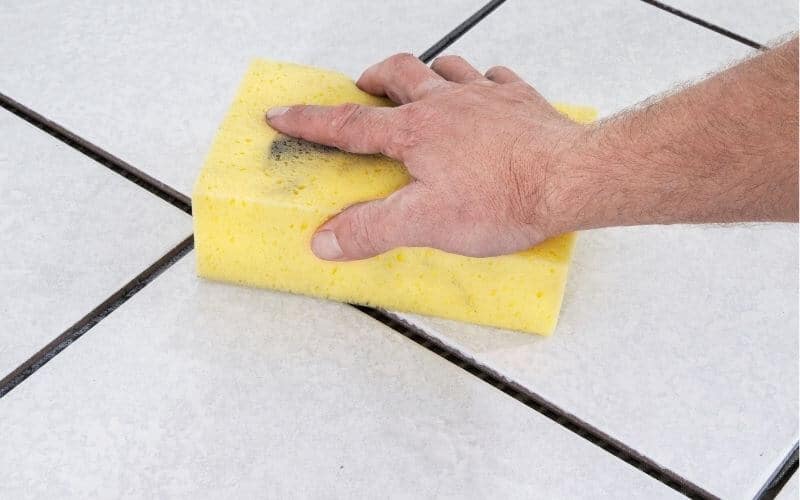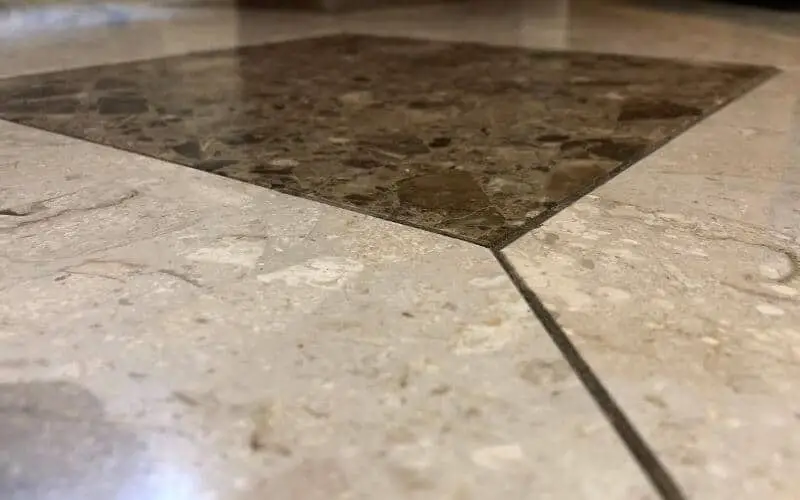The marble floor tiles is a very beautiful type of flooring; it’s no surprise that many homeowners opt for it. But wait! How do you remove water stains from marble, so it maintains its shine and glory?
Keeping marble floor tiles clean is actually simpler than you’d think, but first, you need to know what you’re dealing with.
If you accidentally spilled your dinner over your beautiful white marble tiles and you are desperately looking for how to remove stains from marble floor tiles, or you simply what to know how to clean marble floors, so it stays nice and shiny, we’ve got you covered.
Read: How durable is marble flooring
How to Remove Stains From Marble Floor Tiles
Table of Contents
Cleaning up water spills as soon as they occur is very important in order to prevent further damage to your marble surfaces.
But if the stain has already set into the floor, the method of removal depends on the type of stain you are dealing with; here are several ways to clean different types of stain on marble floor:
Oil-Based Stains
Oil-based stains basically mean anything with grease or oil, such as oil splashes, cosmetics, or beauty products spillage.
These oil-based products penetrate the porous structure of marble stone very easily and darken the floor’s surface, making it quite difficult to remove the stains. Cleaning an oil-based stain on marble tiles will require you to draw the oil out of the material.
You will need to create a marble cleaner using a gentle liquid soap mixed with a couple of drops of ammonia or acetone, ensure to never mix both chemicals together.. Apply this mixture onto the spot and check to see if the grease spill is immediately lifted.
Read: How to remove grease stain from carpet
Soap Scum
If your shower walls, bathroom floors, vanities, are covered with marble tiles and are in constant contact with soapy water, they will require frequent maintenance due to soap scum buildup.
Soap scum builds up inside marble’s pores, and this stain the surfaces much quicker. To remove these stains, mix half a cup of ammonia mixed with a gallon of water and use the mixture to wipe down the marble surface with a soft cloth.
This should be done frequently, but you also need to be careful with how much ammonia you make use of, as ammonia is known to dull marble surfaces.
Read: How to clean pebble stone shower floor
Rust
If you have fitted metal accessories or metal furniture on top of your marble tiles or countertop, this can cause the surface of the marble to become rusted.
Rust can be caused by bronze, copper, and brass items and it can become embedded into the marble surface; this results in greenish or muddy-brown discoloration. Not only does this ruin the floor’s beauty, removing rust from this surface can be very difficult.
This is why it is important to protect your marble surface from rust in the first place; if you have any metal furniture on your marble surface, ensure to inspect the area frequently so that you can catch rust stains in its early stages.
If you find any rusty spot that isn’t too set in yet, using a soft wire brush to gently scrub the surface should get it off. However, if the stain is deeply set in, it will require both a poultice and a chemical treatment with rust remover, applied by a professional cleaner to get it off.
This might seem extreme, but it is the only way you can restore the smoothness and luster of your marble floor.
Read: How to get rust out of concrete floor
Soot Buildup and Smoke Damage
Restoring smoke or fire stained marble surfaces to their original look requires deep cleaning. But if you are dealing with soot buildup, it can be removed with soapy water.
But if after flushing the area and the marble still has a persistent dark spot, you’ll need to make use of a poultice and apply it on the spot for at least 24 hours before rinsing it off.
Read: How to get soot out of carpet
Can You Use Baking Soda to Clean Marble?
Marble tile floors can be cleaned using a variety of methods. One of which is baking soda; you can use baking soda to create pastes known as “poultices and apply it unto your marble surface to clean it; here’s how to do so;
Start by blotting the stained area with a tissue or an old towel; this will help to absorb as much of the stain as possible. Then create the poultice paste by mixing a small amount of baking soda with water till you achieve a sour cream or yogurt consistency.
Apply the paste onto the spot and cover the area with plastic wrap; allow it to sit for at least 24 hours. As the baking soda dries out, it should pull out most of the stain from the marble.
Once dry, use warm water and mild soap to rinse off the marble surface. For particularly stubborn stain, you can repeat the process.
Read: How to clean brick floors
Conclusion
Marble tile is very shiny and a durable flooring alternative to linoleum, ceramic, wood and carpeted floors. However, like all-natural stone, you must know how to remove stains from marble floor tiles as well as how to clean marble floors properly in order to maintain their beauty.
Thankfully marble floors can be cleaned with different natural ingredients, so if you are wondering if “can you use baking soda to clean marble? The answer is yes; in fact, it is recommended that you opt for natural cleaning agents as they are less likely to etch and damage your marble surfaces.

